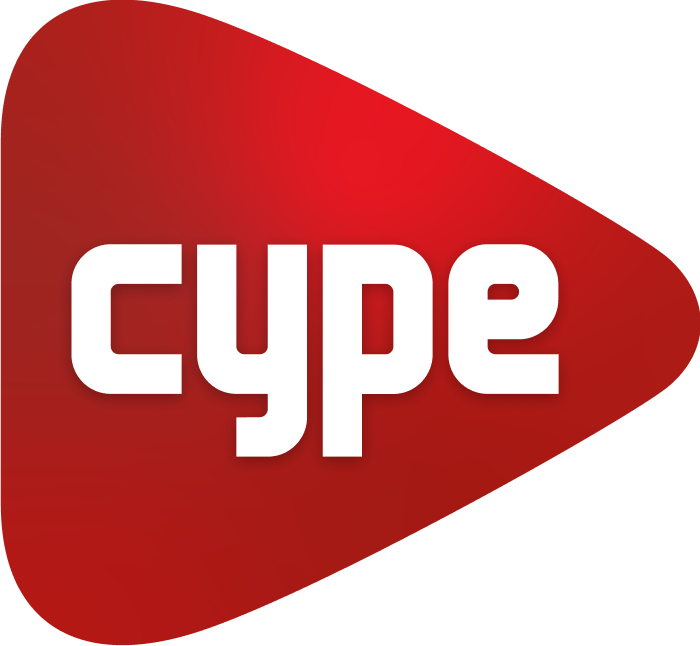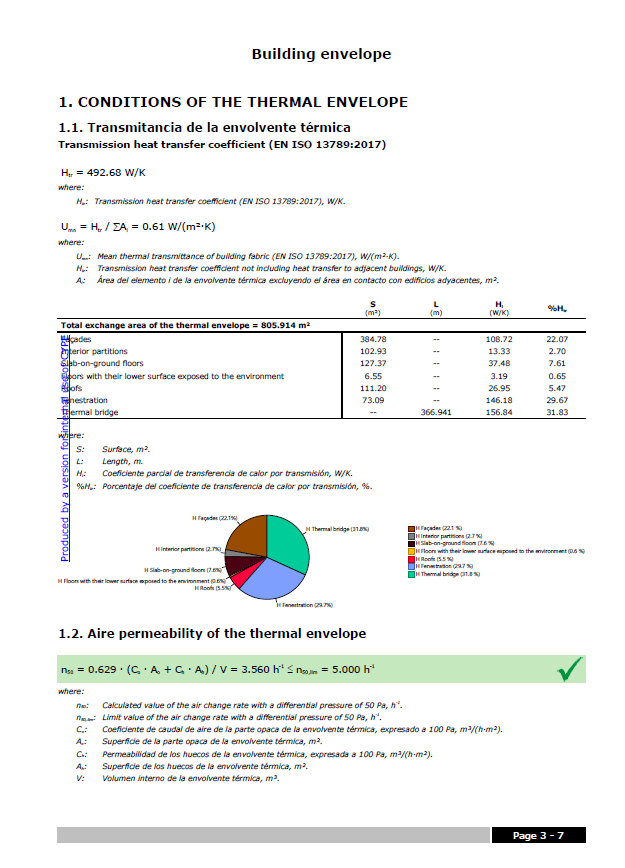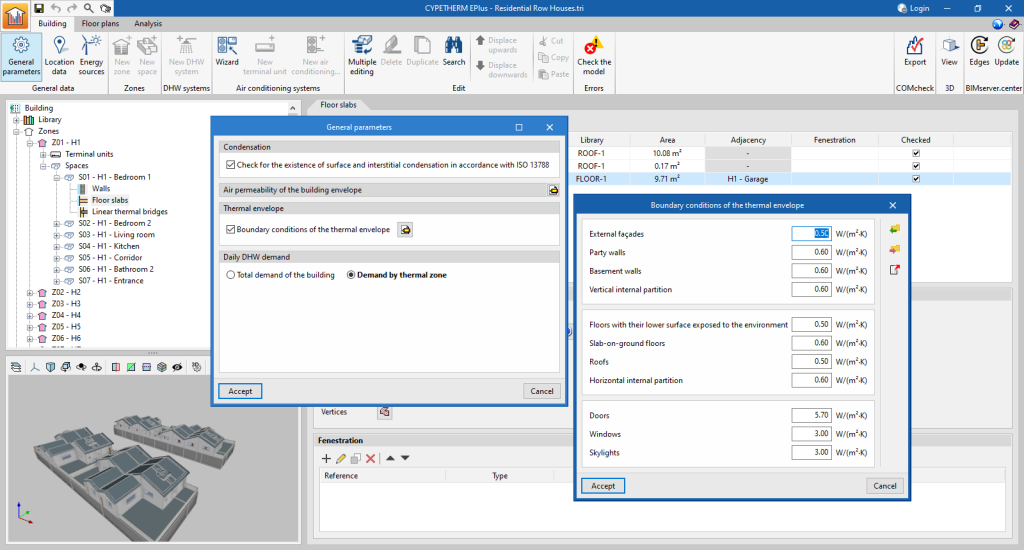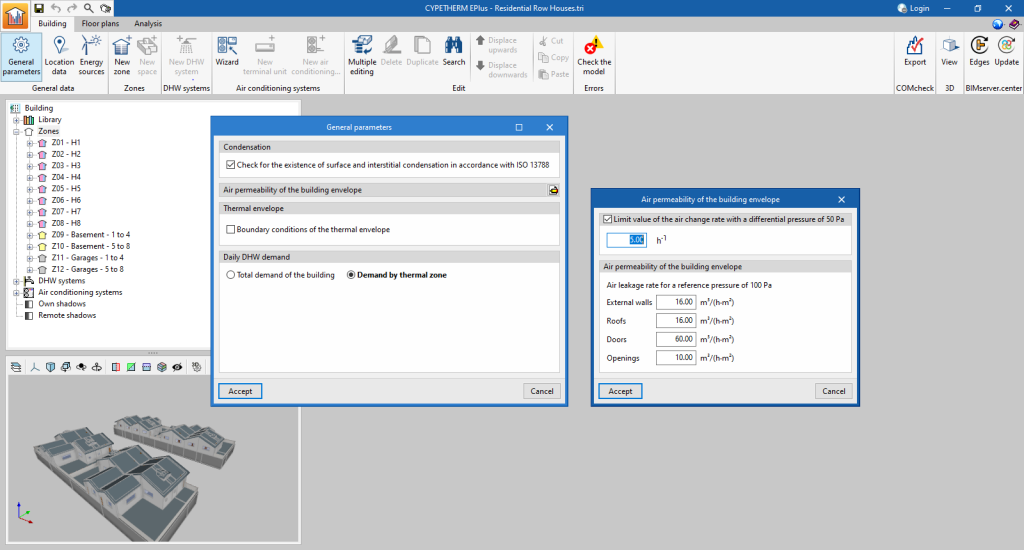The results output of the program has been enhanced with the new "Building envelope" report, available in the toolbar of the "Analysis" tab. This new report, which can be accessed without having to analyse the model, provides the results of the transmission heat transfer coefficient calculated according to EN ISO 13789:2017 and the air permeability of the thermal envelope. A breakdown by elements is provided and the thermal transmittance (U) value of each element is compared with the limit value set by the user.
The limit transmittance values for each type of building element can be set in the "Building" tab, under "General parameters", where the new "Thermal envelope" section appears. By activating the "Boundary conditions of the thermal envelope" checkbox, the program will check the limit transmittance of the building elements both in the "Check" button of the model and in the new "Building envelope" report.




